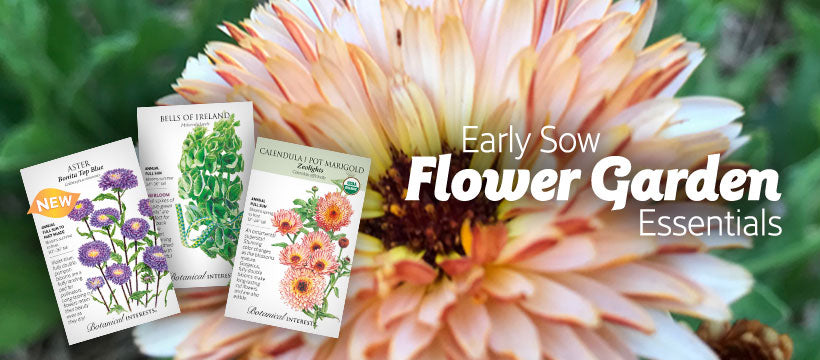Lavender may be one of the most-loved and recognized scents of all time. Its heady aroma is calming, but powerful enough to whisk us away to lavender fields in France–at least in our imagination. If you were wondering how to grow lavender from seed, you've come to the right place!
Lavender has a lot of benefits besides beauty and has been used for over 2,500 years for its aromatic and medicinal qualities. Besides bouquets and food, some common uses of lavender are: for calming; relief of anxiety, headaches, insomnia, burns, depression, canker sores, and menstrual pain; as an anti-fungal and anti-microbial; to treat hair loss from alopecia areata; and more uses are being investigated.

GENERAL SOWING
When to sow outside: 4 to 6 weeks before your average last frost date, as soon as soil can be worked, or late fall in any climate.
When to start inside: RECOMMENDED. 10 to 12 weeks before your average last frost date. Transplant seedlings after average last frost. Soil temperatures between 60° and 70°F are ideal for germination.
Special sowing instructions: Lavender seeds can take 60 days to germinate. Stratification and light aid germination. Press seeds into the soil surface or sow no deeper than ⅛" so they receive light. Stratification is the process of subjecting seeds to moist/cold treatment to break dormancy, which occurs naturally when seed is sown outdoors in fall. For indoor, spring sowing, place the seeds in a small container with moist (not soggy) medium in a sealed bag or container (cover to retain moisture) and place in refrigerator for 3–6 weeks. Learn more about stratification in our article, Stratification and Scarification.
OUTDOOR SOWING
Sowing preparation and spacing: Choose a place in full sun (6 or more hours) with good drainage. Poor soils will work just fine–no need to amend. If your soil does not drain well, creating a mound or planting into a berm will improve drainage, as will adding organic material like compost. Lavender can take the heat, so areas between the sidewalk and the street or next to a south-facing wall won't be a problem. Since lavender thrives in dry conditions (xeric), consider planting it with other plants with similar needs to simplify your watering.
Sow a group of 3 seeds the following distances:
- English Tall/Vera 24"-36" apart
- Munstead 18"–24" apart
Water
Water regularly until established and then stop watering, except in the case of extreme drought.
Fertilization
Not necessary. Lavender thrives in poor soils, and overly-rich conditions causes flowers to be less fragrant.
Weeding
Keep plants well weeded.
Thinning
Thin plants when 1" tall.
Transplanting
Transplant in spring or fall after hardening off. Hardened off plants can withstand some frost. It is ideal to transplant on a cloudy day or in the evening when there is little to no wind. Dig a hole three times the width of the container and the same depth as the medium in the container so the soil around the plant is loosened for new root growth. Water well after transplanting.
Special Care
For a fuller shape, cut plant back by ⅔ before vigorous growth starts in early spring. To encourage another flush of blooms, prune plant by 1/3 immediately after blooming. Lavender does often reseed if blooms are left in place.

HARVESTING
To harvest flowers for aromatic and culinary use, cut flower clusters or strip flowers from stems just as color begins to show but before flowers are fully open. Store in a cool, dry, place away from direct sunlight.
STORAGE
Store in a cool, dry, place away from direct sunlight. If drying stems for floral projects, dry bunches hanging upside down so they don't droop as they are drying.


